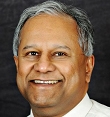If you have not been watching MTV lately, the data from the 2011 National Household Survey (NHS) released by Statistics Canada would have come as a shock.
Especially if you haven’t stepped out of Atlantic Canada or rural Canada or anywhere outside of Montreal, Toronto or Vancouver [MTV]. But if you live or even travelled to any one of these major cities, you don’t need statistics to tell you that Canada is staying true to its roots as a settler society that has always attracted migrants. Toronto leads the foreign-born stats with 46 per cent, followed by Vancouver with 40 per cent and Montreal a distant third with 23 per cent.
The schism between these cities and the rest of the country is because most of the 1.2 million immigrants who arrived in Canada between 2006 and 2011 settled in metropolitan areas. Just over six in 10 (62.5%) of these recent immigrants chose MTV. In comparison, just over one-third (35.2%) of Canada’s total population lived there.
What is surprising is the shock being expressed by some that we are a nation of newcomers; that one in five Canadians were born abroad and represent 20.6 per cent of the population. While this figure is up from 19.8 per cent five years ago and is higher than in most other rich industrialized countries, it is yet to cross the highest proportion of 22 per cent observed between 1911 and 1931.
The difference this time around is the dramatic shift in source countries of immigrants, thanks to policy reforms in the late 1960’s and 1970’s. In 1971, 61.6 per cent of immigrants were from Europe and only 12.1 per cent from Asia. By the late 1980s more than one-half (50.9 per cent) of newcomers were born in Asia. As a result of this shift, immigration has become associated with the increasing proportion of so-called visible minorities in Canada.
By 1996 three quarters of immigrants were persons with visible-minority status. Statistics Canada projects that by 2031, between 29 to 32 per cent of Canadians could be visible minorities based on current immigration and birth outlooks. It also estimates that 25 to 28 per cent of the population will be foreign born by then, surpassing for the first time the early 20th century peak.
So what we are seeing today is a case of having been there and seen it all. What we haven’t seen yet is the consequence of the decision to cancel the mandatory long-form census. The current data is coming out of a voluntary short form version of it called the National Household Survey.
“The long-form census enabled policy folk and businesses to take out much guess work. It helped us answer the ‘why’ parts,” said Michael Bach, founder of the Canadian Institute of Diversity and Inclusion (CIDI).
There is a bit of irony here because of an indication in the CIDI’s first report released on Wednesday called What Gets Measured Gets Done – Measuring the Return on Investment of Diversity and Inclusion. In its survey, some organizations said that they would like to mirror their demographic questions to the questions on the Canada Census to provide comparability to the greater population. They believed this would broaden their range of employee demographics beyond the four designated groups — aboriginal peoples, visible minorities, persons with disabilities and women — included in the Employment Equity Act.
“Now how would they be able to broaden their questions when, for example, there is no accurate numbers for the LGBT community,” said Bach. “Value of data is not being understood”.
Frances Woolley, a professor of economics at Carleton University, said even for the groups designated under the equity act, the census was the only data set that had enough questions on ethnic origin and education.
Writing in the Globe and Mail, Woolley said this type of information is vital when assessing an employer’s progress towards achieving employment equity goals. “An employer can hardly be faulted for not hiring visible minority employees if there are no qualified candidates. Yet if it hires none when statistical data shows there are many visible minority Canadians with appropriate qualifications, questions may be raised.”
Reinforcing this point, Bach said without statistics we wouldn’t know that despite more than 50 per cent of new graduates being women since 1980, their representation in top corporate jobs is still a measly 15 per cent three decades later.
With the government’s perceived lack of interest in statistical data, Bach said, organizations like his had no option but to hold surveys of their own. Asked if the government does not already collect enough data on residents, he said tying the data from various streams will be difficult to get the broad-spectrum view.
We have to wait and see how the NHS turns out to be, Bach said. “In the end it is about asking the right questions to know who your people are.” – New Canadian Media
Ranjit is a Toronto-based writer with interest in Canadian civic affairs, immigration, the environment and motoring. Maytree and Al Jazzera English alumnus.





